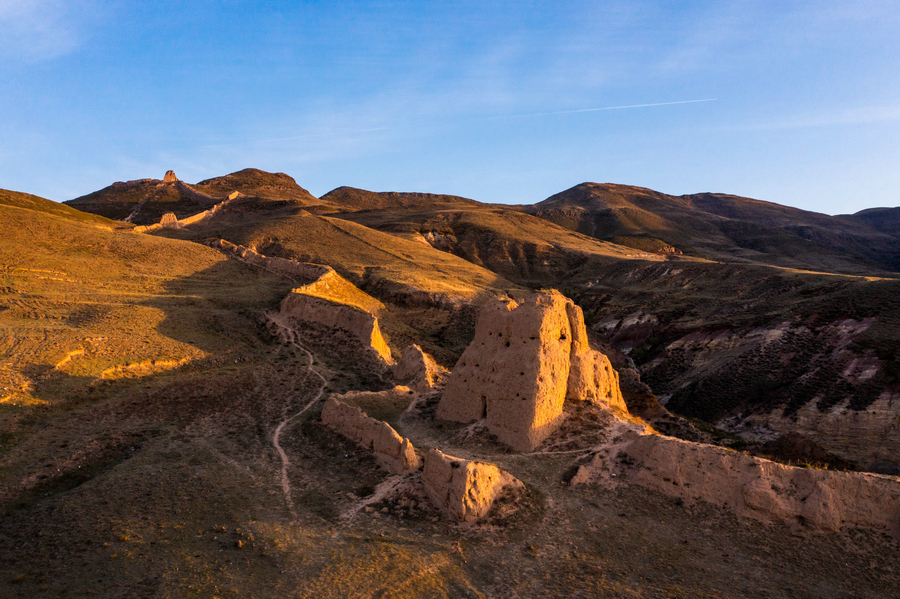
The Ming Great Wall of the Datong Town on the Loess Plateau. [Photo by Yang Dong, provided to chinadaily.com.cn]
The Datong Great Wall, a UNESCO World Cultural Heritage site, was built during the Spring and Autumn Period (770-476 BC) and the Warring States Period (475-221 BC).
Datong has historically been a dividing line between the agricultural civilization in the south and the nomadic cultures in the north. It’s one of the key military strongholds due to its strategic significance. The Datong Great Wall boasts a long history, spanning multiple dynasties including remains from the Spring and Autumn Period, the Warring States Period, Qin Dynasty (221-206 BC), Han Dynasty (206 BC -220), Northern Wei Dynasty (386-534), Sui Dynasty (581-618), Jin Dynasty (1115-1234), Ming Dynasty (1368-1644) and Qing Dynasty (1644-1911). According to a 2009 survey of Great Wall resources, the section of the Ming Dynasty Great Wall in Datong city stretches for 343.149 kilometers. This includes 80.309 kilometers in Hunyuan county, 0.08 kilometers in Guangling county, 4.298 kilometers in Lingqiu county, 62.213 kilometers in Tianzhen county, 49.098 kilometers in Yanggao county, 37.489 kilometers in Zuoyun county and 109.662 kilometers in Xinrong district.
From:chinadaily.com.cn





